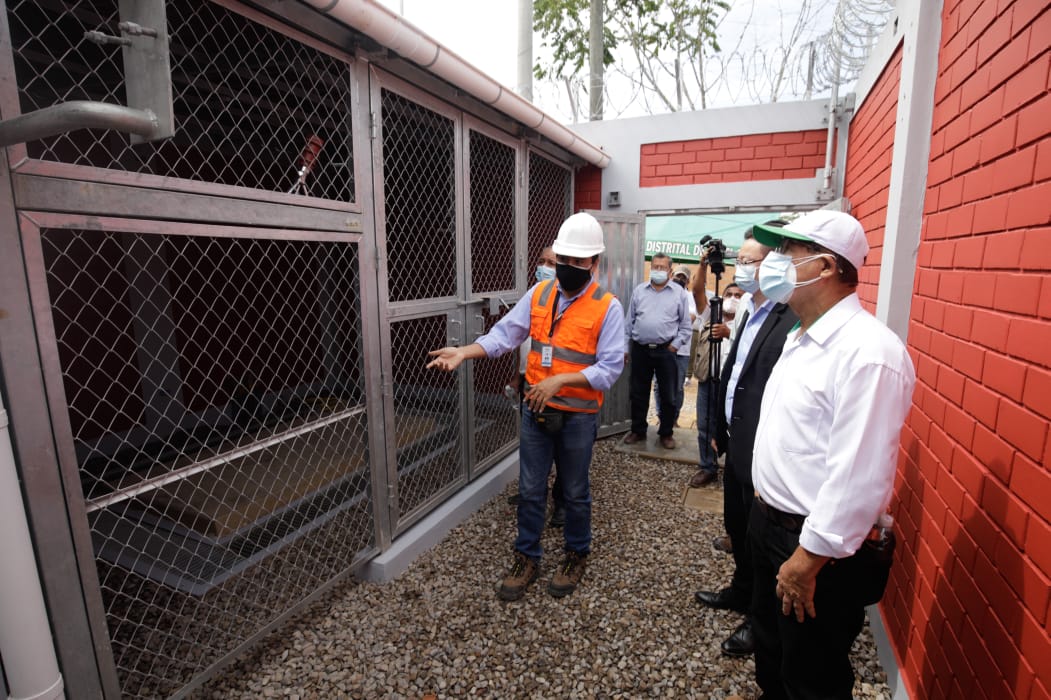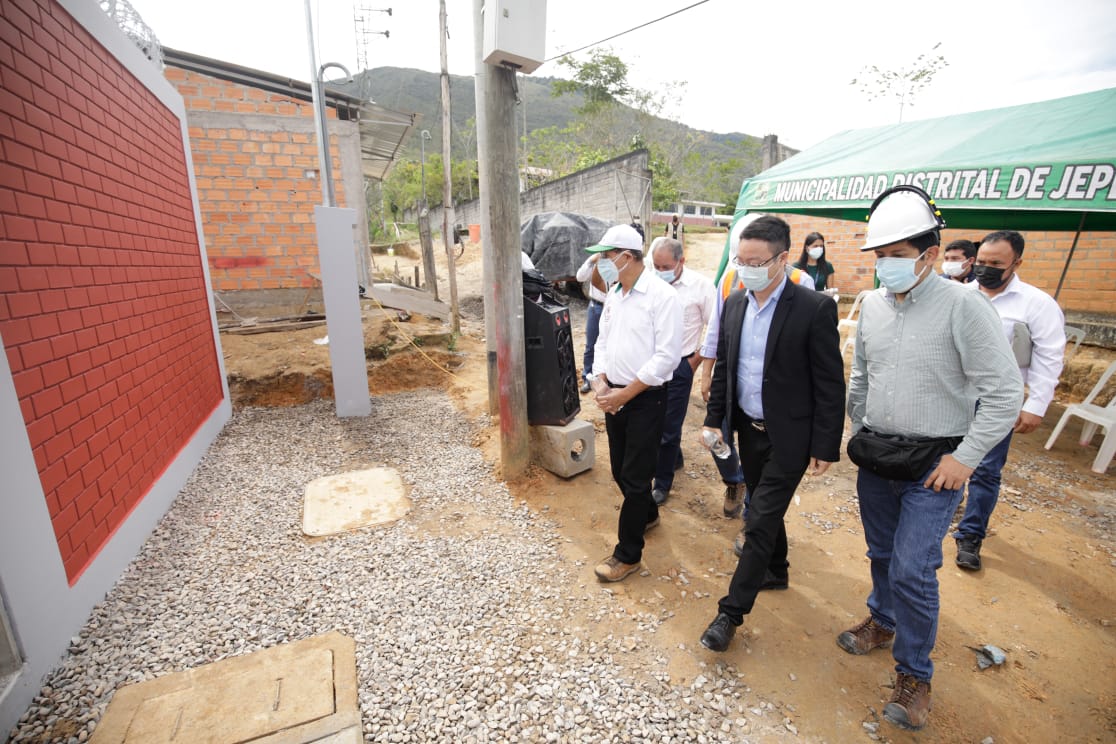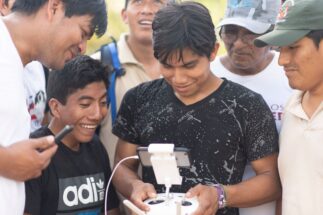In July 2019, a massive new fibre-optic network was announced in Peru, promising to provide internet access to nearly 1 million residents in the Amazon and the Andes, and greatly improve connectivity in the country’s remote rural areas.
7,500 km
The approximate length of the new fibre-optic network covering regions in the Peruvian Amazon and Andes
The vast project, a joint initiative between Peruvian government agencies and a Chinese telecoms equipment company, will extend over 7,500 kilometres and reach 1,700 localities in the departments of Ancash, Arequipa, La Libertad and San Martín. The latter, in the heart of the Peruvian Amazon, is where most progress has since been made, though work across the planned network has been set back by a number of factors, including the Covid-19 pandemic.
This rural internet project is being led by Pronatel, a national telecoms programme linked to the Ministry of Transport and Communications, alongside the YOFC Network, a consortium made up of the Chinese company Yangtze Optical Fibre and Cable (YOFC) and the Peruvian telecoms firm Yachay. This consortium signed four financing contracts for a total of US$411 million as part of a programme led by ProInversión, a government body that promotes public infrastructure works, and brings private investment to them.
“The mission of this project is to improve internet and network connectivity in remote areas that do not have coverage,” Xu Gao, a logistics manager for YOFC told Diálogo Chino. “We won this tender to establish a basic network to cover these places and provide them with access. Schools, police stations, hospitals and health centres will benefit.”
Such benefits are seen as key for the local authorities who are keenly supporting the initiative. Environmental experts, meanwhile, also acknowledge the benefits of the project, but say that concerns about development and the environmental impacts of construction must be monitored and balanced as the network continues to progress.
Delays and compliance
According to the initial contract with Pronatel, YOFC Network was due to complete the project within three years, with construction scheduled to end in 2022. But the pandemic has caused delays, and work will now extend “probably until the beginning of 2023”, according to Xu Gao. Once the network has been inspected and authorised by the Peruvian government, YOFC – which has a presence in more than 70 countries around the world – will provide internet service for 10 years.
Xu Gao explained that the first, preparatory part of the project includes engineering and the creation of the network’s “nodes”, as well as procurement. About 1,500 plots of land need to be purchased for the whole project, he told Diálogo Chino, in order to build as many as 1,700 nodes along the network; these are small buildings in which the connecting equipment is housed, along with the necessary air-conditioning, generators and security. In addition, several maintenance centres will be set up in the four regions. According to Xu Gao, almost half of the fibre-optic network has been completed in almost a year.
Denisse Linares, a specialist with the Amazon programme of Derecho, Ambiente y Recursos Naturales (DAR), a Peruvian NGO, said the project must be closely watched for potentially negative environmental impacts. “It definitely proposes urgent benefits, such as bridging the connectivity gap – even more so in these ‘virtual’ times,” Linares accepts. “However,” she added, “it is necessary to create roads [in the forest] to generate this infrastructure. These spaces have to be well monitored and evaluated, as one of the causes and drivers of deforestation is the creation of roads without adequate planning.” Linares said that these activities can also intensify illegal economies, or even legal activities with adverse impacts on the forest.
China has almost 100% fibre-optic distribution, but 50 years ago there was nothing. We have have grown a lot, and hope to help Peruvians have a similar opportunity.
In this sense, Xu Gao affirms that the YOFC Network has been complying with commitments established at the project’s outset: “We asked for all the necessary authorisations before moving forward. We coordinate with municipalities, regional government and the Ministry of Culture. If we don’t comply, we face a heavy penalty.
“We monitor our contractors closely and also inform them of the restrictions on waste management so that waste does not affect the environment. We know very well that Peru takes great care of its natural reserves and cultural assets, and that is also very important for us,” the YOFC representative said.
Xu Gao said that there are close to 1 million Peruvians in the four regions the network will serve; 215 educational institutions, 17 police stations and 139 health centres will be connected, as well as providing free internet in main squares of towns. “China has almost 100% fibre-optic distribution, but 50 years ago there was nothing. We have developed much more in recent years and have grown a lot. We hope to help Peruvians to have a similar opportunity,” he said.
Internet in the Amazon
The department of San Martín will be the first to benefit from this project. It is estimated that around US$70 million will be invested in order to connect this corner of the Peruvian Amazon, and could benefit some 200,000 people in 220 rural communities, according to information provided by the regional government. The infrastructure works are currently at an advanced stage, and it is expected that the 1,280 km of fibre optics planned for San Martín could be delivered in early 2023.
“We know that this is an important project and that we are the direct beneficiaries. That is why we want this project to be realised as soon as possible,” said José Abner Vásquez Vásquez, director of transport and communications for the regional government of San Martín. “We are constantly supporting the consortium when it encounters any inconvenience, as well as accompanying them to the most remote places to explain to the people the benefits they will soon see,” he added.

Besides better connecting citizens and vital public services, Vásquez hopes that access to more rapid communication is also an opportunity to combat illegal trafficking of timber or animals – growing problems in the region – as reports can be made more quickly.
However, Vasquez mentioned that some opposition has been encountered, particularly as many communities were influenced by fake news generated amid the pandemic. “They thought the antennas were going to affect their health, so they initially opposed the installation,” he told Diálogo Chino.
For this reason, the authorities had to gather their leaders to organise talks and awareness campaigns in 212 of the 220 localities that are part of the project in this corner of the Peruvian Amazon, in order to dispel doubts among the community. These issues, coupled with quarantine, difficult access to some areas and heavy rains, have contributed to delaying the project.
So far, regional authorities are satisfied with the consortium’s progress and respect for the environment. According to information provided by Vásquez, the acquisition of 83 plots of land for the construction of transmission nodes – those which connect the network over greater distances – has been completed, of which 32 are finished and 74 nodes are in the process of construction. In addition, 770 km of fibre optic cable has been laid. As for the access network, the portion of the project whose nodes distribute connections locally, 84 plots of land have been acquired for construction.
Despite the network’s progress and promise, Vásquez pointed out that “more similar projects are needed”, as the 220 localities that will be integrated into the rural internet network make up less than 10% of the region’s 2,510 population centres.
Similar projects are also aiming to connect Peruvians. For example, there is Conecta Selva, another initiative driven by Pronatel, which relies on satellite internet. In November 2021, the government reported that they had managed to provide the service to 348 schools and 46 health establishments in the departments of Loreto, Madre de Dios and Ucayali, benefiting 100,000 people.
As part of the YOFC-led project, the San Martín regional government has since August 2019 conducted internet “training” in the towns involved. The project also reportedly includes the donation of five computers to each school, two to each health centre and one to each police station. The cost of the wifi service will be assumed by the regional government, and private users will be offered service at a cheaper price than the currently available options.
Though technical expertise and support is coming from the YOFC consortium, regional governments are working hard to promote and realise the project. “The idea is to help as much as possible to make this happen,” Vásquez said. He added that he hopes that the project will bring the Amazon closer to the whole world.








